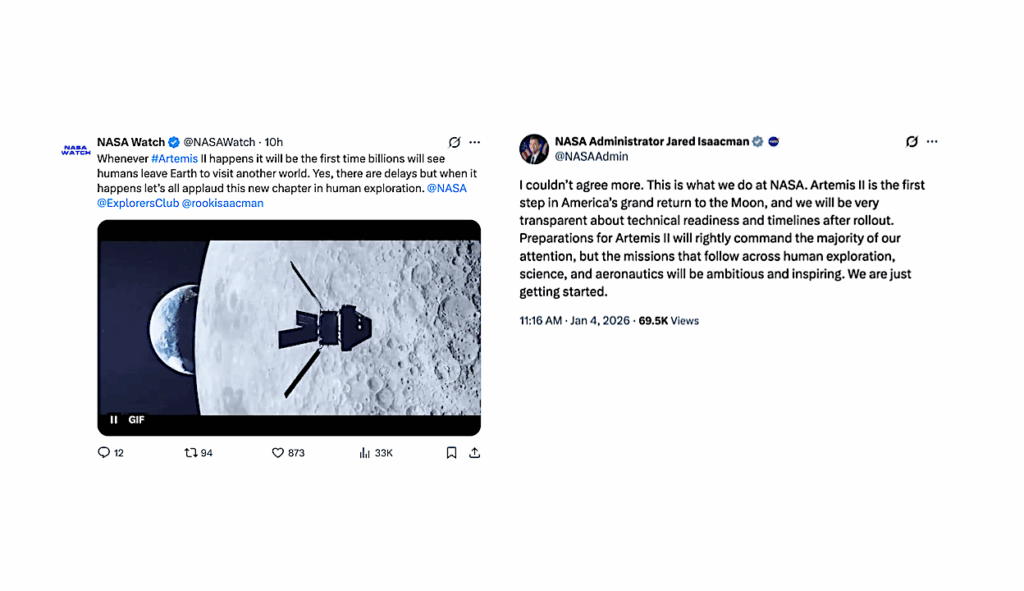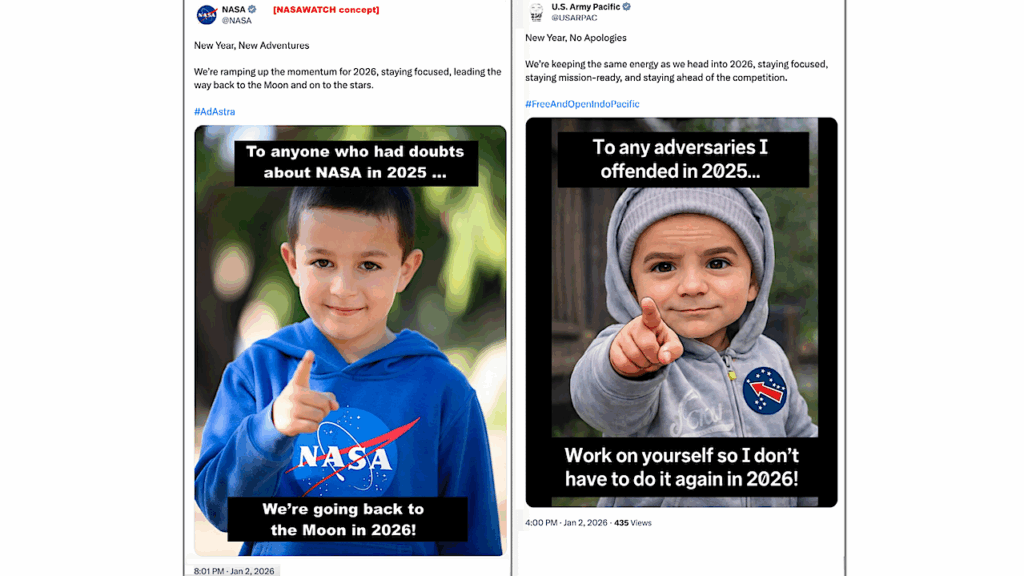Hearing: Structuring a Moon-Mars Program for Success

Keeping Our Sights on Mars Part 2: Structuring a Moon-Mars Program for Success
Rep. Johnson
“Proponents of the Administration’s crash program may argue that such a deadline will instill a sense of urgency and motivation into our space program. However, an arbitrary deadline that is uninformed by technical and programmatic realities, that is unaccompanied by a credible plan, and that fails to identify the needed resources is one that sets NASA up to fail rather than enabling it to succeed. Not only does that do the hardworking men and women of NASA and its contractor team a real disservice, but it will wind up weakening American leadership in space rather than strengthening it.”
Rep. Babin
“At our last Space Subcommittee hearing, NASA said that maintaining the 2024 date for a Lunar landing is unlikely if they do not receive the additional funding they requested in their budget amendment. If a recent House Appropriations Committee hearing is any indication, the likelihood of receiving additional funding this year is decreasing.”
Thomas Young
“A clear, unambiguous goal is required. Is the lunar part of the program to support success at Mars or is it to achieve sustained lunar presence? Does the Mars part of the program have specific objectives such as a Mars orbital mission followed by “boots on the ground,” or is it a long-range objective? Answers to these questions will have a profound impact on schedule, cost and a reasonable timeline for humans to Mars. A clear, unambiguous goal must be followed by a detailed plan that is consistent with the goal and developed by the Mars-Moon program leadership. A detailed plan is the “glue” that integrates the vast array of Mars-Moon participants into the incredible team necessary to implement the Mars-Moon program. Additionally, a detailed plan is necessary to rally support, develop a credible budget, and obtain program and budget approval.”
Thomas Stafford
“President Trump set a goal of returning to the Moon by 2024. NASA will have to make bold decisions and utilize a lot of the management techniques used during Apollo program. The leadership capability at NASA must be augmented at headquarters and at the applicable centers. The execution of a large complex program will require adequate systems engineering, integration and an appropriate budget to carry this out. The Congress will also need to produce adequate legislation to support this effort. Utilizing NASA and the aerospace industry as implementations capable of achieving this noble goal.”
Rep. Horn
“Over the past 20 years, we have had a taste of the cost and effort involved in leading and maintaining long-term human spaceflight activities. Developing, assembling, and operating the International Space Station took over a decade to complete, represented a U.S. investment of over $80 billion dollars, and requires about $3 billion a year to support. Getting to the Moon and Mars will require much more.”
Rep. Lucas
“As we set forth on our return to the Moon, we should always be mindful of the lessons we learned from Apollo and the decades that followed. Progressing incrementally on successive achievements, limiting the number of mission elements to decrease risk, and maintaining consistency of purpose are lessons that are just as relevant today as they were 50 years ago.”









Well, sure. But where exactly does the definition of ‘technical and programmatic realities’ come from?
It comes from NASA, of course. The same NASA that screamed ‘impossible’ few weeks ago when pressed on an earlier lunar landing and was pummeled herein for being afraid to ride the edge, not only on a lunar landing, but alas more generally, too.
Is this criticism fair? There are points to be made on both sides. And meanwhile the fine folks in Hawthorne, and others, plunge ahead.
Houston, we have a problem.
Its not Houston with the problem. Nor is it Greenbelt, or San Jose, or Pasadena. The problem is in Washington. Always has been.
OK, I take your point, but if I may, I am not sure that you see mine?
Re. Johnson argues against
“an arbitrary deadline that is uninformed by technical and programmatic realities,”
to which I’d reply “Duh!”
But the “realities” are defined by NASA, which feeds them to Washington. This is why I referred to SX, which also assesses realities, and, coming to a different conclusion, asserts a different deadline.
It’s true that the competing programs are dramatically different both in concept and philosophy, but in the largest sense they are identical.
Does the agency go boldly and press on towards 2024 or spend another half a decade making sure all the PowerPoint designs and milestone charts lay out a full plan for lunar and martian conquest before congress is willing to cut a check. When Kennedy laid out going to the moon by end of the decade how complete was the NASA plan of all the flights and tests needed prior to Apollo 11? Pretty thin so why not push the system again and challenge NASA to stop power pointing and start doing. The goals are pretty straight forward:
Two pairs of Boots on moon 2024
Flights each year through 2028
Start lunar base in 2028
Support 6 month an 1 year stays at lunar base.
Then onward to Mars once you have that better handle on logistics, long term low gravity living, and the other things.
Good news is lunar lander is firm fixed price so it shouldn’t become a comparable $50B blackhole like SLS/Orion/ground ops.
No bucks. No Buck Rogers.
All the goals you listed will be over budget and might not be done if the the Congressional critters insists on keeping the SLS Orion stack along with the Lunar Toll Booth.
The powers that be have to decide either going to the Moon or build a NASA rocket. They better decide soon before some paying customer planted their flag on the Moon.
Finally the Lunar Landing System will likely not work with a fixed price contract. There is simply a lot of issues that no one will have foreseen along with many new technologies being introduces. So NASA will either pay more or forgo a NASA manned Lunar lander.
You know, I used to make the same argument. That was back when NASA operated in a vacuum. Oh, sure, there were a lot of naysayers out there, many preaching the benefits of allowing ‘private enterprise’ into the game. Many of those voices were here, including a professor from Texas.
And I generally thought they should verify what’s in the pipe they were smoking. I was wrong.
Now we have parallel efforts serving as comparison touchstones, and in the HSF arena NASA is not adjusting. Some will say, some HAVE said, that a large governmental agency will intrinsically lack the necessary nimbleness required. This appears true: Elon would not allow his company to remain tied to SLS, for instance, a program that has sufficient weight to seriously damage the Agency beyond HSF. Then again, he doesn’t have Washington.
Use SAA’s that are not Cost Plus, fixed fee, and sole sourced. Make them based on milestones. Make the company pay for each milestone on their own dime and no payment until NASA is satisfied and do it all under a FIXED PRICE per milestone.
This is far too obvious, Vlad, a fact that leads me to inescapable conclusions (among others):
1. Lots of folks gleefully denigrate elected and non-elected governmental types, painting them en masse as self-serving, poorly knowledgable, and generally as a dim-witted bunch. This is the exact opposite of reality: with exceptions, these are highly capable and intelligent people, elected or employed; for the most part they are trying to do a good job, and they regard governmental service as a calling that requires considerable sacrifice personally and to their families;
2. And that being the case, the actual facts behind what we merrily excoriate are not only known, but very likely provide some sensibility to the decisions we see. And that being the case, third conclusion:
3. The space journalist cadre remains far too dependent on NASA to actually probe. Just watch a news conference or better watch the questions after a launch briefing. Questions are obsequious at best, asked by folks anxious to establish technical bona fides and
4. By and large, space journalists appear to build a too-cosy relationship with the Agency which so clearly needs questioning.
Whew. Rough morning 🙂
NASA is going exactly no where until it makes some serious structural changes to its personnel policies.
After 1981, after the Shuttles were designed and the first flights had been flown, then operations engineers were put in place to manage the program. This did not happen until after the design was complete and proven to be functional. Once the ops people were put in charge note that they never made any improvements to the system. In fact after Columbia instead of thinking about improvements the same operations experience chose to shut the system down and start anew. They genuinely thought they could do a better job if given the opportunity. They have now shown that they could not.
NASA made a serious mistake, first on ISS by placing operations engineers in charge, and later on Constellation. NASA also ensured they put their own people in charge of contractors at Boeing and Lockheed. This was simple inbreeding. Now not only could NASA not manage their development efforts but they ensured that their contractors were also compromised. They should have been putting proven DDT&E experience in charge to ensure the vehicles could fly and could function.
We’ll see if the new management can overcome this problem that the old management got NASA into. After a full generation of really poorly chosen inexperienced people in charge, my guess is that it is doubtful they can overcome their current circumstances.